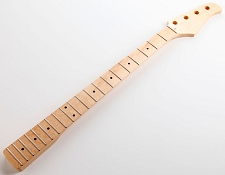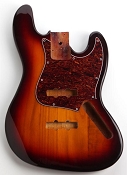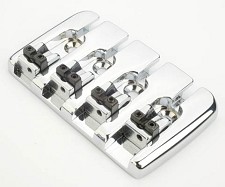I felt I should put up a little blog post about the project bass I’ve been working on for a couple of years now. I’m convinced it’s finished, but hey, that’s what I thought a couple of years ago.
This starts as one of those “I didn’t really mean to” to stories. Around Christmas of 2010, I got my renewal for my satellite radio account. At almost exactly the same time, I happened to notice that Guitarfetish (GFS), the online parts supplier that Mr. Thorpe uses for his prototype builds, had started to carry bass necks and bodies. I thought, “For what they want for three years of satellite radio, I could buy enough parts to build myself a new bass. Hmmmmm…”
So, I ordered two pickups, a bridge, a maple neck, a Jazz-style body (I’d never owned a J bass before, and it had been 20 years since I’d had a bass with two pickups), a pickguard, and some tuners from GFS. I didn’t want to build a completely stock Fender-style bass; I had some ideas of my own, but more on that in a minute.
I recorded some of my reactions as I basically took the parts out of the box:
“I think there’s a real possibility that you could look at the “sealed vintage-style neck” straight out of the box and be disappointed. The finish was rough, the frets were sprouty (a couple of them were really bad – do the guys putting these things together trim the frets off with pliers?) and the overall piece was kind of underwhelming. Now, I realize that these kind of projects never fall together and, like any project, be it finishing a basement or restoring a classic car, you’re going to be in for some fabbing and general elbow grease before you get it anywhere near where you want it.
According to GFS’ website, “This can make…a PERFECT vintage feel satin finish (Just give the neck a good once-over with some 0000 Steel Wool)”, so despite my initial misgivings, I had at it with the ol’ quadruple-ought, and lo and behold, about an hour (or maybe a bit longer) later, the neck actually felt good.
I left the frets to Dan – a few passes with a flat file, then a careful rounding-over with his fret files, and we were in business.
The profile is kinda like a 50’s “baseball bat” neck, but with a flatter, wider fingerboard. Overall, it’s a lot like its owner – chunky and comfortable.
The headstock is….well, it’s a headstock. I’m not thrilled with the shape (sorta 80’s Asian…Mann, maybe, or Hondo?), and there were some discussions about reshaping it, which is why there’s still no decal. However, the one issue that complicates that is…
I used GFS’ Wilkinson tuners, which are really solid and smooth, but BIG. The headstock had to be reamed out somewhat for the bushings, and the backing plate for the “G” tuner had to be rounded off with a grinder in order to not hang over the edge.”
Though the neck had some issues, the body was stellar from the get-go, a beautiful sunburst (which is curiously a three-colour sunburst on the front, but just black and red on the back); I realize that they’re made in China on a CNC machine, but I still don’t know how they manage to keep the retail price at 59.00. Made of paulownia wood (the Asian substitute for ash or alder), it’s really solid, and sounds great.
I’d gladly build another instrument with a GFS body.
The hardware was just as nice; I already mentioned the tuners, but the bridge was another bargain.
It’s a heavy cast piece à la Hipshot, fully adjustable with an Allen key, and nicely plated for some real sparkle, especially compared to a stock Fender bridge. Again, I’d use this piece on any project I had going. How do they sell them for 19.95?
Now, I did mention that I didn’t want to build just a stock Jazz-style bass, so one of the things I thought I’d play with is the electronics. I’d heard rave reviews about the Music-Man style pickups that GFS sells, so I ordered one of those. For the treble pickup, I ordered GFS’ “Pro” style Jazz pickup.
I’m not a big “knobs and switches” guy, so my next challenge was “how do I control these pickups so that I can balance the sound, without the bass looking like it was designed by NASA?” In fact, what I really I wanted was something that looked simpler than a stock Jazz bass.
My dad had just bought me the terrific coffee table book “Fender: The Golden Age” for Christmas, and I started to look at the pictures of early Jazz basses, when they only had two controls; a “stacked” volume and tone control for each pickup. “Well”, I thought, “I can certainly use that idea”.
I ordered a 1962 Jazz control plate from the MusicZoo (the only genuine Fender part on the instrument), and got Dan to scrounge up the appropriate electronics: one “stacked” pot to control both the volume for the Jazz pickup, and the overall tone for the whole instrument, and a volume control with a push-pull switch built in, for the Music Man pickup. That allows me to shut off one of the coils in the MM pickup to get a brighter, more balanced sound. Props to the MusicZoo for optimism, BTW; I ordered one twenty-dollar part from them, and now they email me catalogue shots of ten thousand dollar guitars every week!
Well, I’m at 900 words and I’ve just ordered the parts; I guess the build will be a separate thread.




